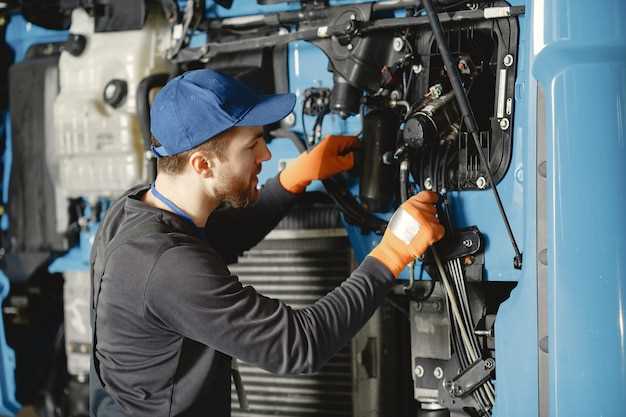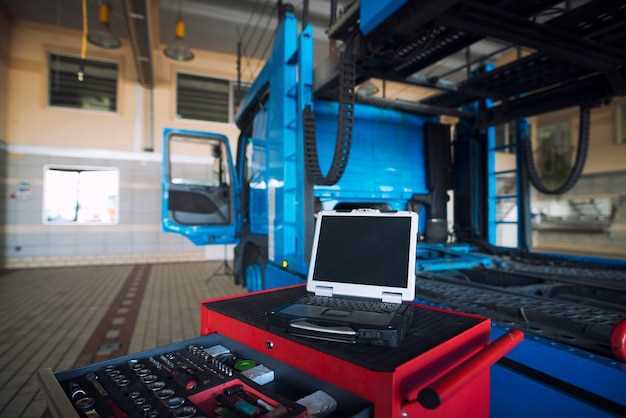
In the world of heavy-duty trucking, electrical problems can cause significant downtime and financial losses. Understanding the common issues and their diagnostics is essential for any truck owner or mechanic. Electrical systems in trucks are complex, encompassing various components such as batteries, starters, alternators, and wiring. Each of these elements can present unique challenges that may require specific troubleshooting techniques.
The process of diagnostics begins with identifying the symptoms of the electrical problem. Common signs may include flickering lights, failure to start, or malfunctioning instruments. A systematic approach is vital; using a multimeter to test battery voltage, inspecting fuses, and assessing connections can help pinpoint the issue. Understanding how each component interacts within the larger electrical system is crucial for effective troubleshooting.
Moreover, advanced diagnostic tools like scan tools can provide valuable insights into electronic control units (ECUs), enabling technicians to access trouble codes and live data. This information can simplify the process of isolating faults in the electrical network. In essence, effective troubleshooting of electrical problems in trucks revolves around a combination of thorough knowledge, methodical testing, and the right tools for diagnostics.
Identifying Common Electrical Issues in Truck Systems

Understanding the electrical systems in trucks is essential for effective troubleshooting. Common electrical issues can often be traced back to faulty wiring, poor connections, or component failures. Here are some prevalent problems to consider:
1. Faulty Wiring: One of the primary causes of electrical failures in trucks is damaged or worn wiring. Exposure to elements, abrasion, and vibrations can lead to frayed wires, which may result in intermittent connections or short circuits. Regular inspections of wiring harnesses can help identify these issues before they escalate.
2. Poor Connections: Corroded or loose connectors can disrupt the flow of electricity, leading to various performance issues. Connectors that are not properly secured can cause intermittent failures, which complicate diagnosis. Ensure that all connections are clean, tight, and free from corrosion to maintain optimal electrical function.
3. Battery Problems: The battery is a critical component of any truck’s electrical system. A weak or dead battery can mimic symptoms of wiring issues. Checking the battery voltage and ensuring that terminals are clean and tight is crucial. Additionally, consider testing alternators and charging systems to ensure they are functioning correctly.
4. Fuses and Relays: Fuses and relays protect electrical circuits from overloads and shorts. A blown fuse often indicates an underlying problem in the wiring or components linked to that circuit. Regularly inspect fuses and replace any that are blown, while also investigating the cause to prevent recurrence.
5. Grounding Issues: A poor ground connection can lead to a variety of electrical malfunctions. If a truck experiences flickering lights or erratic electrical behavior, it may be due to grounding problems. Ensure that all ground connections are secure and clean, providing a solid path for electrical current.
By being aware of these common electrical issues and understanding their relationship with wiring, truck owners and technicians can efficiently diagnose and resolve problems, ensuring reliable vehicle operation.
Step-by-Step Diagnostics for Electrical Failures in Trucks
When troubleshooting electrical issues in trucks, a systematic approach is essential for effective diagnostics. Begin by gathering all relevant information regarding the truck’s symptoms. Determine if the problem is intermittent or consistent, and note any unusual sounds, smells, or warning lights that accompany the failure.
Next, verify the battery condition. Check the voltage using a multimeter to ensure it is within the acceptable range (generally 12.4 to 12.6 volts for a fully charged battery). Inspect the battery terminals for corrosion and ensure they are tightly connected.
Proceed to examine the fuses and relays. Check all appropriate fuses using a test light or multimeter to confirm they are intact. Replace any blown fuses and pay attention to any recurring failures that could indicate a deeper issue.
Investigate wiring and connectors. Look for signs of wear, fraying, or breaks in the wires. Inspect connectors for corrosion or looseness, as these can interrupt the electrical flow. Ensure that grounds are secure and free from rust or dirt, as a poor ground connection can lead to various malfunctions.
If the issue persists, utilize a scan tool to check for Diagnostic Trouble Codes (DTCs) that may provide insight into specific electrical faults. Analyzing these codes can direct your troubleshooting efforts more efficiently.
Test the affected components individually. For example, if a specific light or accessory is not functioning, check the voltage at the component to confirm it is receiving power. If the voltage is present, the component itself may be faulty and need replacement.
Finally, review the manufacturer’s service manual for wiring diagrams and specifications. This can help you understand the electrical system layout and identify potential trouble areas more quickly. By following these steps systematically, you can effectively diagnose and resolve electrical failures in trucks.
Wiring Inspection Techniques for Reliable Truck Operations

Regular wiring inspections are essential for ensuring the reliable operation of trucks. Faulty electrical connections can lead to unexpected breakdowns and safety hazards. Adopting effective diagnostics techniques can help identify issues before they escalate.
Start by visually inspecting the wiring harness for any signs of wear, corrosion, or damage. Look for fraying insulation and exposed wires, which can lead to short circuits. Verify all connections, ensuring that they are secure and free of rust. Pay special attention to common stress points, such as near moving parts or areas with high vibration.
Utilizing a multimeter is crucial for diagnostics. Measure voltage levels at various points in the electrical system to ensure that power is reaching components effectively. A significant voltage drop may indicate a problem with the wiring or connectors. Additionally, testing the continuity of wires can reveal breaks hidden from sight.
For more complex issues, employing a wire tracer can help identify problematic regions in the harness. This tool sends a signal through the wires, allowing for precise location of breaks or shorts. Understanding the truck’s wiring diagram is also beneficial; it provides insight into the expected path of the electrical flow, making it easier to spot discrepancies during inspections.
Incorporate regular inspections into your maintenance schedule. It is advisable to perform a detailed wiring inspection after major repairs or modifications, as these can sometimes inadvertently affect the electrical system. Keeping records of inspections and repairs helps in tracking recurring issues and planning future diagnostics.
By implementing thorough wiring inspection techniques, truck operators can greatly enhance reliability and performance, ultimately ensuring safer operations on the road.




